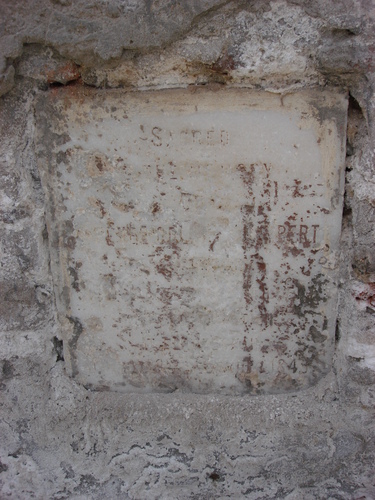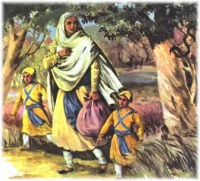Main Page
Welcome to SikhiWiki, |
| Saturday July 27, 2024 |
|
On 28 November every year, the Sikhs celebrate the birthday of the third son of Guru Gobind Singh, Sahibzada Zorawar Singh (28 November 1696 - 26 December 1705). He was born to Mata Jito ji (also known as Mata Sundari ji) at Anandpur on this sacred day in 1696 and was barely nine years old at the time of the evacuation of Anandpur on the night of 5-6 December 1705. Since the death of his mother, Mata Jito, on 5 December 1700, his grandmother Mata Gujari who had been especially attached to young Zorawar Singh and his infant brother, Fateh Singh took charge of both of them as the column moved out of Anandpur. While crossing on horseback the rivulet Sirsa, then in flood, the three were separated from Guru Gobind Singh and the main party of Sikhs. .....More Bhai Santokh Singh, (1787 - 1843) the noted author of six important literary works - Naam Kosh, Guru Nanak Parkash, Garb Ganjni Teeka, Balmik Ramayan, Atam Purayan Teeka and his magnum opus, Sri Gur Partap Suraj Granth aka Suraj Parkash, was born on 8 October 1787. He was the son of Bhai Deva Singh and Mata Rajadi, professional cloth printers of Nurdin village, also known as Sarai Nurdin, 7 km northwest of Tarn Taran in Amritsar district of the Punjab, India. His father, though poor, was educated and well versed in the sacred texts. He sent his son, after preliminary education at home, to Amritsar where he became a pupil of Giani Sant Singh (1768 - 1832), a renowned man of letters and custodian of Sri Darbar Sahib. After having studied Sikh Scripture and history, Sanskrit language and literature, poetics, philosophy and mythology at Amritsar for about 15 years, Santokh Singh moved to Buna, an old town on the right bank of the Yamuna in the present Yamuna Nagar district of Haryana, some time before 1813. There he established himself as a writer, poet, and preacher. .....More Did you know...
Once there was no rain in a particular area for an extended period resulting danger to the crops. In some areas, the crops had already been destroyed. So the local people of that area decided to do Ardas - a prayer or supplication to God so that their crops may be saved. Many hundreds of people gathered together at the designated place for this Ardas. While this gathering was in progress, a passing Sikh Saint stopped by. He asked one of the crowd why there was such a big crowd gathered and what was the purpose of the gathering. One of them told the Sikh Saint that that they had gathered here to do Ardas because the crops will be destroyed in the absence of rain; they were going to ask God for rain. The Saint said that was a good thing that they were doing an ardas but he did not see anyone carrying an umbrellas or "barsatie" (rain coats)…. When Waheguru (God) accepted your Ardas then there will be lot of rain. One group leader laughingly said, "But we do not know whether it will rain or not." The Saint said, "How will your Ardas be accepted when you do not have faith in Waheguru" . He told them all to go home .  Photo by panoramio Amarpal S. Sidhu - see more at Ludhiana |
Recent articlesPopular articlesSikhi FAQ...
Important Anniversaries
| ||||||||||||||||||||||||||||||||||||||||||||||||||
Template:2024/07 Template:2024
| Popular Articles on Sikhi Wiki |
|
Mool Mantar | Japji | Sikhism | Dasam Granth | Kirtan | Beliefs | Bani | Gurus | SGGS | Bhai Manjh | Vegetarianism | Bhagat Sain | Bhagat Dhanna | Today | Blogs |
















